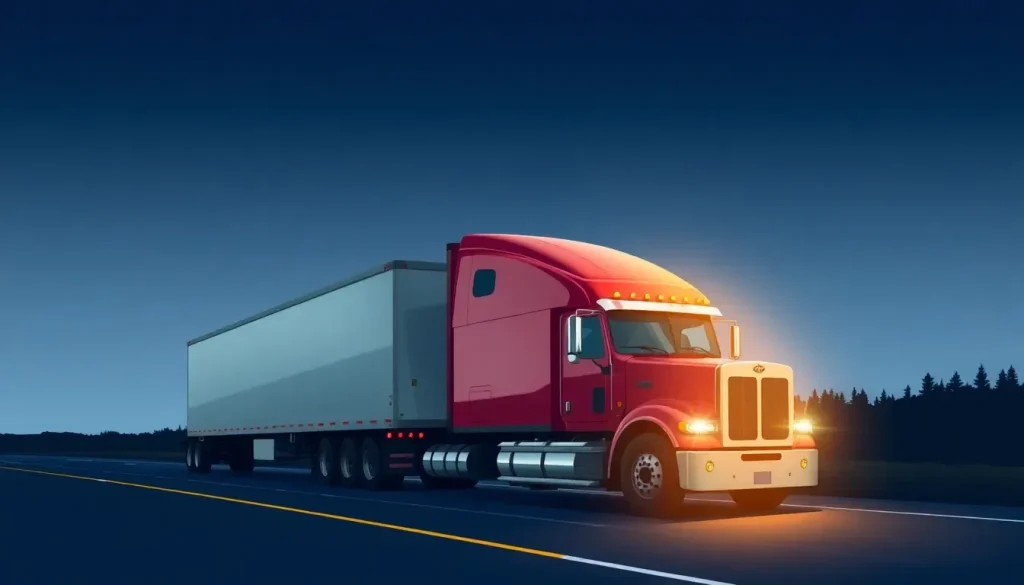Thunder Bay Ontario implements new truck route starting October 1

As transportation regulations evolve, cities must adapt to ensure public safety and traffic efficiency. Thunder Bay, Ontario, is no exception. With the implementation of a new designated truck route bylaw, the local government aims to enhance road safety while accommodating the needs of businesses. Understanding the implications of this change is crucial for residents, truck drivers, and local businesses alike.
- What is the designated truck route bylaw in Thunder Bay?
- Why is the new truck route necessary?
- How will the changes be implemented?
- What are the implications for truck drivers and businesses?
- Public response and community engagement
- Future considerations for Thunder Bay's transportation infrastructure
What is the designated truck route bylaw in Thunder Bay?
Effective October 1, Thunder Bay's new designated truck route (DTR) bylaw redirects most heavy trucks to utilize the Trans-Canada Highway (Highway 11/17) instead of local roads like Dawson Road or Arthur Street. This strategic decision allows for exceptions that cater to local deliveries, ensuring that businesses can continue to operate without significant disruptions.
The primary goal of the DTR is to enhance public safety by minimizing truck-related risks in residential areas. Kayla Dixon, commissioner of infrastructure and operations, emphasized this point in a recent news release, stating that redirecting heavy truck traffic is vital for preserving the integrity of local roads and safeguarding residents.
Why is the new truck route necessary?
The decision to implement this bylaw stemmed from an engineering assessment completed in 2024, which validated previous traffic findings. The data indicated a need for intervention to improve safety and reduce potential hazards associated with heavy truck traffic in populated areas. Subsequently, the city council approved the bylaw, acknowledging the need for a structured approach to heavy vehicle management.
Key reasons for the new route include:
- Enhanced road safety: Fewer trucks on local roads mean reduced risks for pedestrians and cyclists.
- Maintenance of road infrastructure: Heavy trucks can cause significant wear and tear on local streets.
- Support for local businesses: The bylaw allows for deliveries, ensuring that commerce can proceed without hindrance.
How will the changes be implemented?
To facilitate a smooth transition, the Ontario Ministry of Transportation and the city of Thunder Bay are collaborating on the installation of clearly marked signage to guide drivers on the new route. These signs will help prevent confusion and ensure compliance with the new regulations. Additionally, local police will be responsible for enforcing the new rules, adding a layer of accountability for truck drivers who may inadvertently stray from the designated paths.
Moreover, city staff are proactively engaging with the trucking industry to ensure that all carriers and drivers are well-informed about the changes. This outreach is vital for fostering cooperation and understanding among stakeholders, which is essential for the successful implementation of the bylaw.
What are the implications for truck drivers and businesses?
The new designated truck route presents both challenges and opportunities for truck drivers and local businesses. Understanding these implications is crucial for adapting to the changes effectively.
For truck drivers, the primary adjustments will include:
- Route planning: Drivers will need to familiarize themselves with the designated routes to avoid fines.
- Increased travel distance: Some drivers may face longer distances to reach delivery points, requiring adjustments to schedules.
- Potential savings in road maintenance: Improved local road conditions could result from reduced heavy truck traffic.
On the other hand, local businesses stand to benefit from:
- Improved safety: A more pedestrian-friendly environment can attract more customers.
- Continued access to deliveries: Local businesses can still receive shipments, albeit under a regulated framework.
- Stronger community relations: Enhanced road safety can foster goodwill between businesses and residents.
Public response and community engagement
As with any significant regulatory change, public response to the new truck route has been mixed. Some residents welcome the initiative, appreciating the focus on safety and community well-being. However, others express concerns about potential disruptions to local deliveries and longer wait times for goods.
To address these concerns, the city has organized community forums and informational sessions to engage with residents. These events provide a platform for the public to voice their opinions and gain insight into how the changes will be managed. The city's transparency in communication is vital for building trust and ensuring that everyone feels heard.
Future considerations for Thunder Bay's transportation infrastructure
Looking ahead, the implementation of the designated truck route bylaw can serve as a model for other municipalities facing similar challenges. As cities grow and traffic patterns evolve, the need for effective transportation regulations becomes increasingly apparent. Thunder Bay's proactive approach could inspire other regions to adopt similar measures, fostering safer and more efficient road systems across Canada.
In addition, ongoing evaluations of the DTR's effectiveness will be necessary. By monitoring traffic patterns and public feedback, city officials can make informed adjustments to the regulations, ensuring that they continue to meet the community's needs. This iterative process can enhance the city’s resilience and adaptability in the face of changing transportation dynamics.
For those interested in a visual overview of the designated truck route changes, check out this informative video:
Ultimately, the success of Thunder Bay's new designated truck route bylaw hinges on effective communication, collaboration among stakeholders, and a commitment to continuous improvement. These elements will ensure that the city not only enhances safety for its residents but also supports the economic vitality of its local businesses.




Leave a Reply